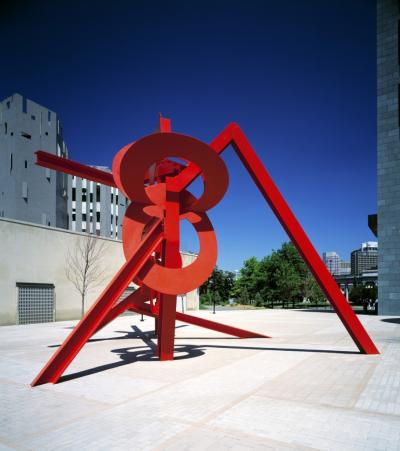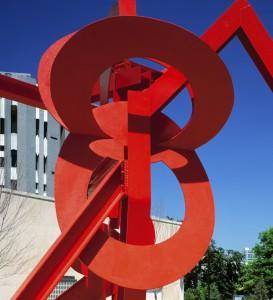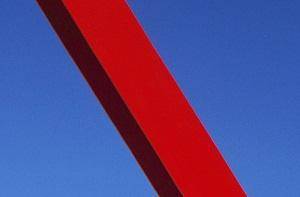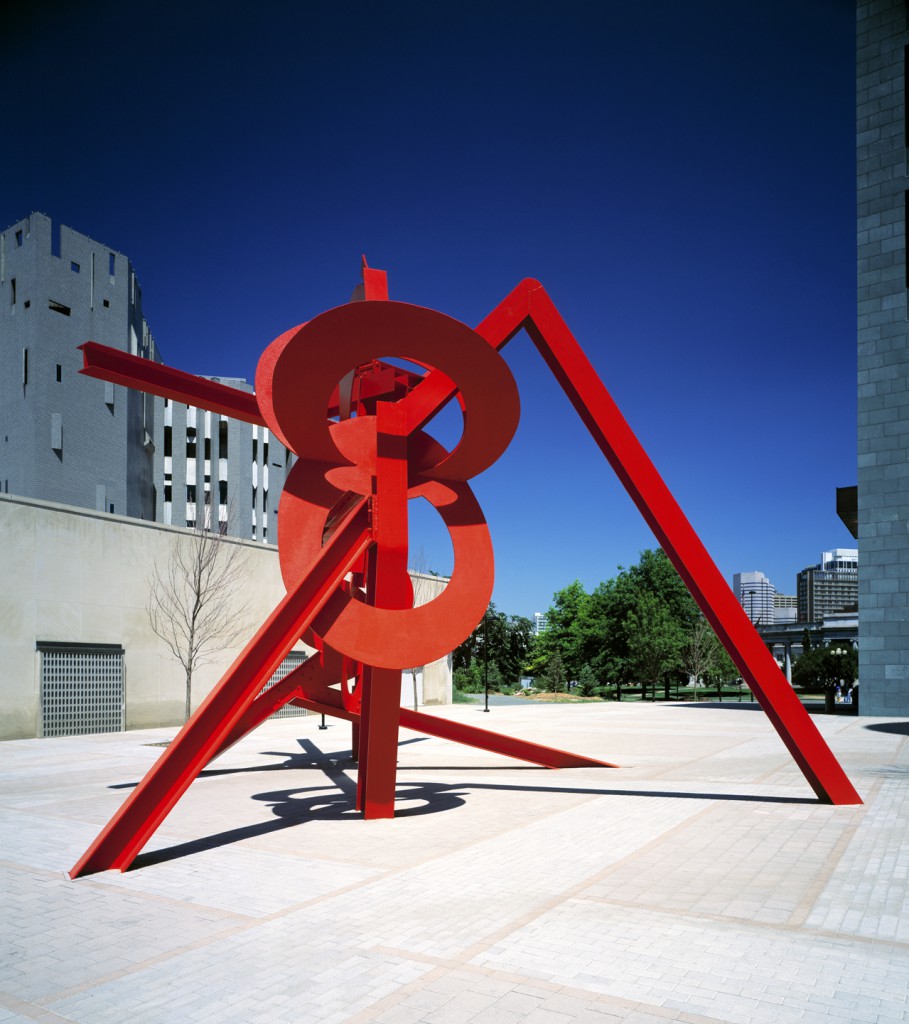Students will learn about Lao Tzu and the artist’s inspiration for creating it. They will then capture words to describe the piece in an exercise that teaches them how to move beyond first impressions.
Students will be able to:
- list at least five descriptive words for Lao Tzu;
- feel comfortable writing quick, free-flowing observations based on a prompt; and
- refine, revise, and edit a rough draft for final presentation.
Lesson
- Preparation: Familiarize yourself with the information from the About the Art section on Lao Tzu.
- Warm up: Write the following words on the board: hard, dark, big, small, and soft. Have students work with a partner or individually to identify one or more words that could be used in place of the ones you’ve listed. Call on volunteers to share their words. List the synonyms under each respective word, and talk about the nuances that distinguish the meanings of the words in each category.
- Show students the Lao Tzu sculpture. Lead a careful group looking exercise, asking questions to direct looking, and generate a list of adjectives used by students to describe different parts of the sculpture. List key adjectives and words on the board.
- Instruct students to write a poem or short paragraph to describe the piece, and tell them that they may NOT use any of the words they called out. Encourage them to think of synonyms, or other words that might capture their thoughts about details in the sculpture even more closely than the words on the board. Invite them to share their piece with a partner to make sure they haven't used any of the words in the initial list.
- After they have finished their short description or poem, have them imagine they are the wind blowing in and around the sculpture and write a second piece describing the wind's perspective. They will then get with partners to peer edit both pieces, select a favorite, and submit/share the piece they chose with the class.
Materials
- Paper and pens or pencils
- About the Art section on Lao Tzu
- One color copy of Lao Tzu for every four students, or the ability to project the image onto a wall or screen
Standards
- Visual Arts
- Observe and Learn to Comprehend
- Relate and Connect to Transfer
- Language Arts
- Oral Expression and Listening
- Research and Reasoning
- Writing and Composition
- Reading for All Purposes
- Collaboration
- Critical Thinking & Reasoning
- Information Literacy
- Invention
- Self-Direction

Lao Tzu
Mark di Suvero
1991
Height: 29.5 ft. Width: 16.5 ft. Depth: 36.5 ft.
Funds from NBT Foundation, Jan and Frederick Mayer by exchange, and friends of modern & contemporary art, 1996.11
Photograph © Denver Art Museum 2009. All Rights Reserved.
Mark di Suvero was born in China in 1933 to Italian parents who were serving as diplomats in Shanghai. He vividly recalls visiting the Forbidden City, the Imperial Palace complex located in the heart of Beijing, and marveling at the experience of space as at once infinite and comprehensible. When he was seven years old, di Suvero’s family moved to San Francisco where he dropped out of high school to explore the United States. After studying art at the University of California at Berkeley, di Suvero moved to New York in 1956 and did construction work to support himself while working on his art. Di Suvero started off creating sculptures out of wooden beams, metal pipes, old tires, and other discarded items. His materials would soon grow to I-beams, like those used in Lao Tzu, which are made of steel and typically used for support in houses.
In 1960, di Suvero was forced to quit his construction job after an on-site accident crushed his pelvis. This didn’t stop him from creating art, however. After using a wheelchair for the next decade, he began walking again with braces and crutches. Despite his limited mobility and the industrial qualities of his sculptures, di Suvero performs most of the work himself. “I do most of the cutting, welding, and crane work,” he says. The artist uses his crutch, several cranes, a cherry picker, and welding equipment that he operates himself to bring the sketches of his artworks to life.
Di Suvero moves directly from drawings of his ideas to the actual realization of his sculptures, with no three-dimensional models in between. “If it works in space on paper, it’ll work with I-beams,” he says. In fact, some have likened his sculptures, with their strong diagonal lines and looping forms, to drawings or “doodles” brought to life in space. Even though this sculpture is nearly 30 feet high, 36 feet long, and weighs 16.5 tons, di Suvero insists he does not make “monumental sculpture.” Instead, he aims to create sculptures that will activate the spaces, the structures, and the people around them. Di Suvero attempts to engage viewers with his sculptures, saying, “I believe that certain structures have a certain resonance for people.” Sonnet Hanson, DAM Master Teacher for Modern and Contemporary Art, describes Lao Tzu as “a jungle gym for the imagination—both for di Suvero, who animates space through strong but playful lines, and for viewers, who can make their own associations with the shapes, colors, line, weight of the sculpture and the space that it animates.”
Di Suvero names his sculptures after things he cares deeply about, drawing from his studies and interests in philosophy, poetry, music, dance, science, and art history. Some of his titles acknowledge people who inspire him, like Mother Theresa and jazz musician Charlie Parker. He named this sculpture after Lao Tzu, a Chinese philosopher from the 6th century BC whose writings are the foundation of Taoism (a centuries-old tradition that bases human experience on nature, vitality, and peace). But di Suvero is cautious about assigning specific meaning to his sculptures. “I try to keep them abstract,” he says. “The titles are just a handle.”
Details

Shapes
This sculpture includes circular shapes, strong lines, and sharp angles. Look for the interlocking arcs di Suvero uses to link the I-beams together.

Mobility
At the top of the structure, there is a mobile steel beam in the shape of an L that moves with the wind.

Color
According to di Suvero, the color was chosen to contrast the blue skies of Colorado.

Dynamics of Space
This sculpture is located in the plaza between the Denver Public Library and the North Building of the Denver Art Museum. Seeing the sculpture from different points of view—up close, far away, and at different angles—might make it seem like a completely different object. Notice the relationship between the sculpture and the buildings, people, and space around it. Also notice how the shadows cast by the sculpture play a roll in how it is seen.
Funding for object education resources provided by a grant from the Morgridge Family Foundation. Additional funding provided by the William Randolph Hearst Endowment for Education Programs, and Xcel Energy Foundation. We thank our colleagues at the University of Denver Morgridge College of Education.
The images on this page are intended for classroom use only and may not be reproduced for other reasons without the permission of the Denver Art Museum. This object may not currently be on display at the museum.







